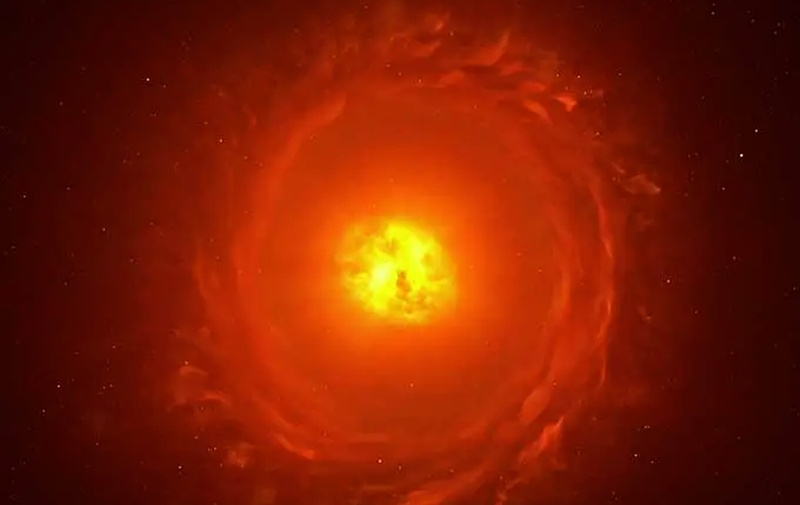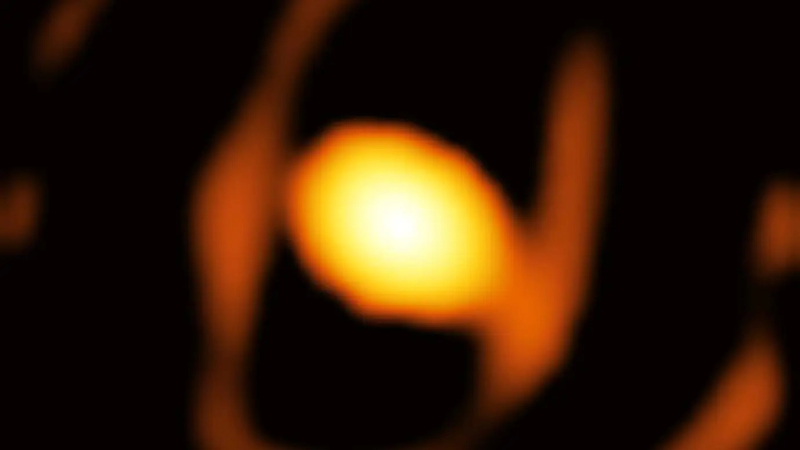Chilean astronomers have captured a close-up photo of the giant dying star WOH G64 outside our galaxy. The star, which is about 1,500 times larger than our Sun, is located 160,000 light-years from the solar system. It is located inside the Large Magellanic Cloud, a small galaxy that orbits the Milky Way.

An artistic depiction of a star in a gas-dust “cocoon”. Image source: ESO
Previously it was believed that to obtain a clear image of a star at such a distance from Earth, a telescope with a diameter of at least 100 meters was required. Astronomers at the European Southern Observatory (ESO) refuted this postulate by combining information from four 1.8-meter telescopes into a single image.

The instruments are part of the Very Large Telescope Interferometer (VLTI), built by ESO in the Cerro Paranal mountains in northern Chile at an altitude of 2,635 metres. The experiment gave scientists a unique opportunity to see the processes occurring at the end of a star’s life cycle.
«WOH G64 was observed using the VLTI GRAVITY instrument at wavelengths of 2.0–2.45 μm. We were able to image the inner circumstellar environment of WOH G64 – the first interferometric image of RSG outside the Milky Way,” the scientists said in their report.

«This star, WOH G64, gives us a very real opportunity to study what a star is doing, presumably just before a supernova explosion, said Keiichi Ohnaka, an astronomer at Andres Bello University. — “Immediately before” in the astronomical sense. Not today, not next week and not next year.”
It could take 10,000 to 100,000 years before WOH G64 goes supernova, if it does at all. Scientists are confident that the likelihood of such an outcome is very high. The star is surrounded by a hazy, ovoid cocoon, which Ohnaka suggests is made up of gas and dust particles that the star emits before its death.
The main argument in favor of the theory about the close, by cosmic standards, death of the star is the decreased brightness of its glow compared to long-term observations. Ohnaka believes that the star has started to emit more and more gas and dust particles in recent decades, which has reduced its brightness. The dimming period may be temporary, but most often the stars never return to their original state.